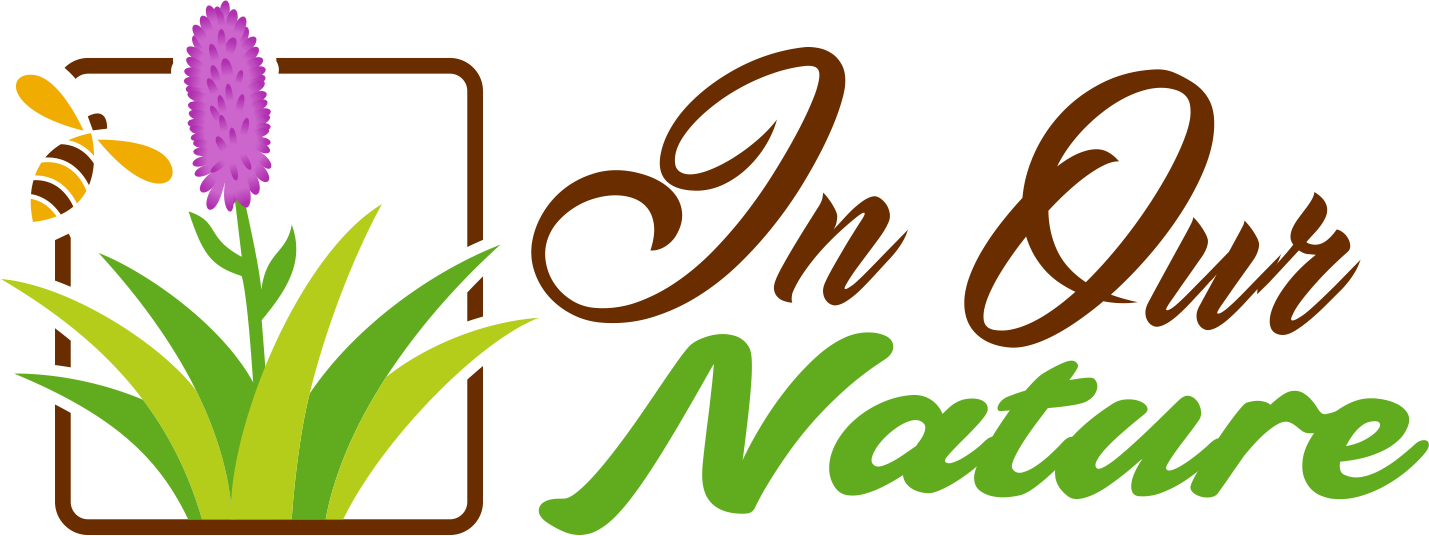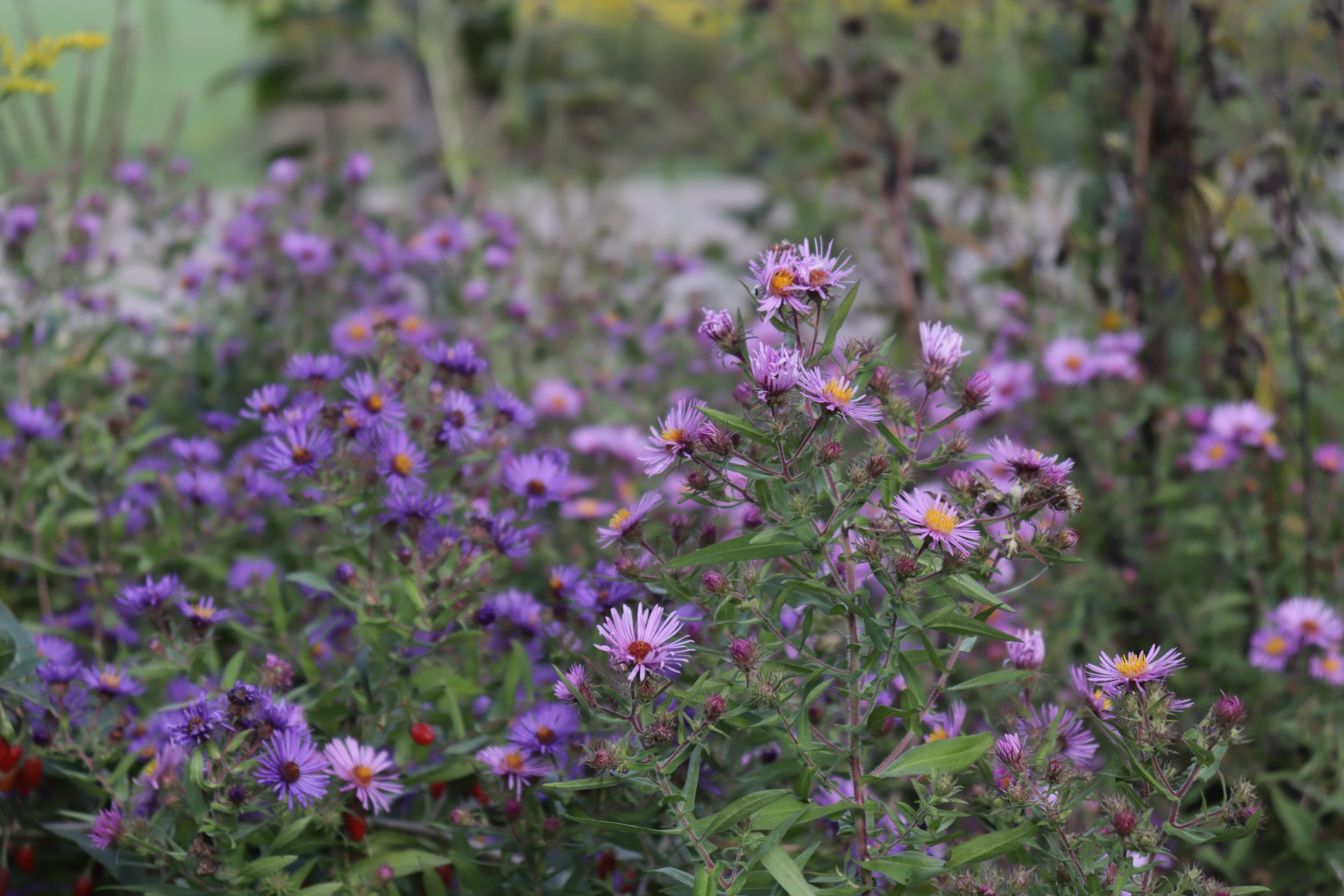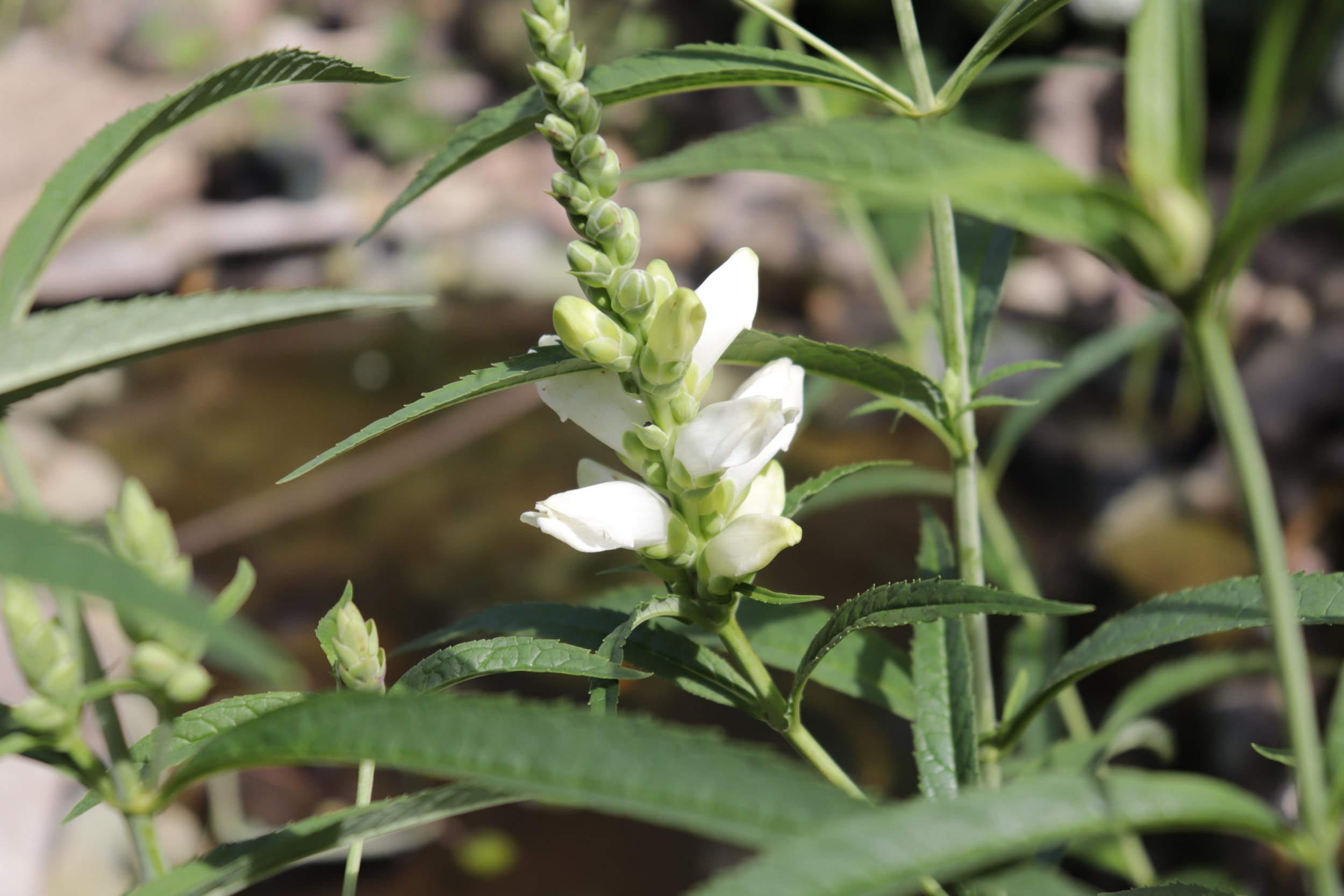Best Native Plants for Clay Soil
~ A list of the best Ontario native plants that will survive and thrive in clay soils. ~
Traditional horticulture teaches us that “poor” soil must be amended with compost, peat moss or similar additions. This leads gardeners to spending back-breaking hours amending their compacted or poor draining clay soil with sand and other additions. The reality is that there is no such thing as poor soil - only poor plant choices.
Natural garden design seeks to reduce cost and labor by sticking to the environmental constraints (soil type, moisture, etc.) of a site, even if this means embracing a slightly more limited palette of plant species. This article will demonstrate that you nonetheless have a large selection of plants to choose from for your clay soil.
There is a native plant for almost every condition you can imagine and clay is no exception. In this article, In Our Nature lists the best native plants for clay soil. You will find that the plants on this list are easily found at local native plant nurseries in Ontario (including ours) and are easy to grow, even for beginners.
How do you know if you have clay soil?
Dig a hole in your garden about 30cm deep, moistening it slightly if its dry. Pinch the soil between your thumb and fingers and pay attention to how it feels. Clay soil will feel smooth and slippery.
You can try another method by moistening the soil slightly and squeezing it in your fist. Open your fist and pay attention to what the clump of soils does. Clay soil will form a solid clump that doesn't break apart very easily between your fingers. It will also be hard to dig in and will collect water after a rain.
The Best Ontario Native Plants For Clay Soil
Prairie & Meadow Gardens
New England Aster (Symphyotrichum novae-angliae)
Showy Tick Trefoil (Desmodium canadense)
Wild Strawberry (Fragaria virginiana)
Woodland Sunflower (Helianthus divaricatus)
Dense Blazing Star (Liatris spicata)
Mountain Mint (Pycnanthemum virginianum)
Gray Headed Coneflower (Ratibida pinnata)
Black-eyed Susan (Rudbeckia hirta)
Stiff Goldenrod (Solidago rigida)
Wetland Gardens
Pink Milkweed (Asclepias incarnata)
Swamp Aster (Symphyotrichum puniceus)
Marsh Marigold (Caltha palustris)
Palm Sedge (Carex muskingumensis)
White Turtlehead (Chelone glabra)
Virginia Rye (Elymus virginicus)
Spotted Joe-pye (Eupatorium maculatum)
Sneezeweed (Helenium autumnale)
Michigan Lily (Lilium michiganense)
Cup Plant (Silphium perfoliatum)
Woodland Gardens
Red Columbine (Aquilegia canadensis)
Wild Sarsaparilla (Aralia nudicaulis)
Virginia Anemone (Anemone virginiana)
Large-leaf Aster (Eurybia macrophyllus)
Pagoda Dogwood (Cornus alternifolia)
Elymus hystrix (Hystrix patula)
Running Strawberry (Euonymous obovatus)
Prairie & Meadow Gardens
For gardens with more sun than shade and dry to average soil.
New England Aster is commonly found in meadows, fields and roadsides where it compliments the yellow of Goldenrods. You can bring this vibrant display (and the butterflies that come with it) into your garden too as this fall wildflower is easy to grow and very forgiving, even in tough clay!
Grows best in average moisture but will tolerate drier clay soils too. Pinching back the stems before mid-July will help provide you with a more bushy form.
This is one of our latest blooming plants, often blooming until its hit by a few hard frosts. Bees and butterflies frequently visit New England Aster. It especially important for migrating Monarch butterflies.
Showy Tick Trefoil (Desmodium canadense)
Showy Tick Trefoil is a bushy perennial with numerous clusters of elegant pink flowers.
A very adaptable and forgiving plant that will grow in a wide variety of soil types in dry to moist conditions.
Showy Tick Trefoil is a prolific self-seeder and will quickly cover tough sites.
Note that it produces seedpods that readily stick to fur or clothing. Best used in restorations or in the middle of a garden where you won’t have to brush up against it!
Host plant for Silver-spotted Skippers. The leaves are frequently used by leafcutter bees who cut out small holes to line their nests with.
Wild Strawberry is an adaptable, fast-spreading, semi-evergreen groundcover that thrives in clay soil.
The early spring flowers are attractive to a diversity of pollinators and look stunning on mass. The flowers mature into tasty red strawberries that are desired by humans and wildlife alike.
It can tolerate light foot traffic so it's a good addition to no-mow lawns.
Wild Strawberry will readily spread to form an attractive carpeting groundcover even in tough clay soil.
The leaves are semi-evergreen and take on stunning hues of red in the fall.
Woodland Sunflower is a wildlife superstar with prolific blooms and a very sturdy, upright form. It is fast growing, drought tolerant and more shade tolerant than other sunflowers.
It makes an excellent structural plant as it holds its form well into the winter months to provide year-round garden interest. The leaves even provide fall interest by turning shades of yellow.
Dense Blazing Star is an upright plant with grass-like leaves and showy purple flower spikes that add a remarkable vertical presence to gardens. The flower spikes are dense packed with small purple to pink, sometimes white, flowers that provide an abundance of resources for pollinators.
Very easy to grow and forgiving. Even when grown in dense clay and dry soil it won’t complain. Don’t grow in rich soil or it may flop. Expect it to maintain a clumping habit and to self-seed lightly in bare soil.
The long flower heads mature into attractive fluffy seed heads in the fall.
Bergamot has cemented its place in native plant gardens across its range due to its showy lavender flowers, high wildlife value and excellent winter interest. It is easy to grow, tough and thrives in heavy clay soils. It prefers some moisture but will tolerate some drought once established. It maintains a clumping form but will spread by self-seeding. Note that this is a short lived perennial. Butterflies, bees and hummingbirds flock to the showy, jester-hat-shaped blooms.
An adaptable and highly fragrant plant. The white flowers are small but numerous and have a long bloom time. The dried seed heads add winter interest while feeding birds.
a tough, upright perennial with brilliant yellow flowers. The brown, egg-shaped seed heads create excellent winter interest.
A familiar and versatile native wildflower. It's long bloom time makes it a useful companion for many other species.
Stiff Goldenrod is a beautiful, upright Goldenrod with a clumping form and large oval leaves - a beautiful option for the toughest of clay soils. The rigid stems are topped with a large cluster of golden-yellow flowers in late summer which are highly attractive to pollinators.
It may flop in rich soils, especially while it’s young. Although it’s clump-forming, it may self-seed in bare soil but planting your garden densely will prevent this. Stiff Goldenrod is rare in the wild in Ontario.
Indian Grass is a warm season clumping grass and is one of the defining grasses of the tallgrass prairie. It is valued for it’s blue-gray foliage and tall, vertical presence it adds to the landscape.
The showy fall colour takes on a bronze/orange hue. It persists into winter making it a suitable structural plant for winter interest.
It has very showy seed heads that are relished by birds in the fall.
An adaptable, easy to grow native plant which adds a welcome splash of yellow to the late-spring garden. The cheery flowers are highly attractive to early bees and have a long bloom time.
Golden Alexander is adaptable to a variety of moisture, soil and light conditions. This is a short-lived perennial but it will persist in the garden if you let it self-seed.
Host plant for black swallowtail caterpillars.
Wetlands Gardens
For gardens with poor drainage, consistently moist or saturated soil, ponds and rain gardens. These plants do best in full sun to part sun.
Pink milkweed is a highly desirable milkweed for native plant gardens. It maintains a well-behaved clumping form and has very showy pink blooms. Despite its affinity for moist soils, it will tolerate some drought once established.
This plant has no problem providing exceptional beauty and wildlife value in the toughest of clay soils, and is especially well-suited to rain gardens in clay soil.
Swamp Aster is a moisture loving wildflower and is commonly found growing around wetlands, floodplains and shorelines. In your garden it will do well in wet to moist soil in full sun to light shade. It will tolerate drought once established but it may loose foliage and become scruffy so you are best planting it in a spot where the ground doesn't dry up. It actually works very well in rain gardens and clay soil alike.
The nectar and pollen attracts a wide diversity of pollinators including bumblebees, native solitary bees and butterflies such as skippers.
Marsh Marigold (Caltha palustris)
Marsh Marigold lights up the landscape in early spring with large, cherry yellow blooms. It cannot be allowed to dry out so it is best suited for shallow water in pond gardens or consistently mucky soils. Bold leaves provide great greenery once the flowers fade.
The unique leaf structure of palm sedge makes it an interesting addition to wet areas such as rain gardens or even at the end of a downspout. It spreads well, but not aggressively so it plays well with other plants as a weed-suppressing living mulch. Not only does it thrive in clay but it tolerates standing water, mucky soil and even slightly dry soils once established.
Rich, tawny seed heads arch away from the plant, adding excellent textural interest to the garden.
White Turtlehead (Chelone glabra)
Elegant, charming and dependable. White Turtlehead thrives in mucky soils and can even tolerate medium moisture conditions with a little bit of shade.
Tubular white flowers emerge in the summer months and are a special attraction for bumblebees. The flowers fade into globular seed pods which provide great winter interest.
Useful in rain gardens. Tolerates temporary flooding.
Virginia Rye (Elymus virginicus)
Virginia Rye is a cool-season bunch grass meaning it greens up early in the spring to extend seasonal interest. It retains an upright clumping form and spreads via seed dispersal.
It produces attractive seed heads which persist into winter where they will feed birds and add winter interest.
Grows best in moist, sunny sites but also tolerates drier sites if it gets some shade.
Spotted Joe-pye provides a strong structural presence in gardens. The large clusters of pink flowers stand tall over the garden and draw in pollinators from far and wide. They prefer moist areas but will grow in most gardens where the soil doesn't dry out completely.
Sneezeweed has an unfortunate common name but don’t fear - it won’t cause you to sneeze. It is prized by gardeners for it's showy late summer flowers that add a stunning splash of yellow to the landscape. As the flowers fade, the turn into globular seed heads that add a whimsical charm to the garden. Sneezeweed maintains a clumping form but will readily self-seed.
Despite its affinity for moist areas, Sneezeweed will grow well in gardens with average soil moisture once it is established.
Michigan Lily (Lilium michiganense)
A truly delightful plant to have in your garden! The fiery orange blooms
Simple to grow in In addition to its unmatched beauty, its is very popular with hummingbirds.
Cup Plant gets it's name from the fact that its leaves are fused at the stem, forming a natural "cup" that holds rainwater. It is a vigorous grower and not suitable for planting in small gardens.
Blue Vervain is a showy wetland species with a strong, upright form. It is prized in gardens for it's gorgeous violet/blue flower spikes that bloom from the bottom up. Great winter interest.
New York Ironweed puts on a brilliant display of unique, deep-purple flowers in late summer that act as a beacon for pollinators. Easily grown in moist soils and full sun.
Woodland Gardens
For gardens with more shade than sun such as those under mature trees. These plants will benefit from soil that is rich in organic matter.
Wild Columbine is an adaptable, spring blooming valued in gardens for its droopy red/yellow flowers. It is adaptable to shade or sun and persists in gardens by self-seeding.
Wild sarsaparilla (Aralia nudicaulis)
The unique globular flowers of wild sarsaparilla emerge in early spring, much to the delight of early pollinators. Attractive foliage and dark purple berries.
Virginia Anemone (Anemone virginiana)
The small flowers of Virginia anemone sit atop slender stems in early summer. They produce an abundance of pollen as is apparent by the pollinators that flock to it. Adaptable to sun or shade.
Large-leaf Aster is a great plant for shade gardens. It begins the growing season as an attractive ground cover (spreading via rhizomes) with rough, heart-shaped leaves from which rise, flat topped clusters of purple to white flowers in late summer.
Pagoda Dogwood (Cornus alternifolia)
A wonderful small tree with fragrant spring flowers and a delightful layered form. In the summer months, the flowers fade to dark blue berries that are quickly eaten by birds.
Bottlebrush Grass makes a nice structural grass in shade gardens. It starts growing in early spring so it’s a good choice to add some early greenery to your garden. The spiky seed heads are very showy and look amazing when backlit by the sun.
Running Strawberry (Euonymous obovatus)
An underused groundcover for shady spots with oval-shaped, green leaves and a very low-growing form. In late summer, the inconspicuous flowers become bright red and pink berries.
Sweet Cicely (Osmorphiza claytonii)
Sweet Cicely has wonderful, fern-like foliage and pure white flowers that stand out in the shade.
Zig Zag Goldenrod is valued in shady gardens for its fragrant yellow flowers that support a diversity of pollinators! It is one of the best behaved Goldenrods in a garden setting and will even grow in dry shade.




































